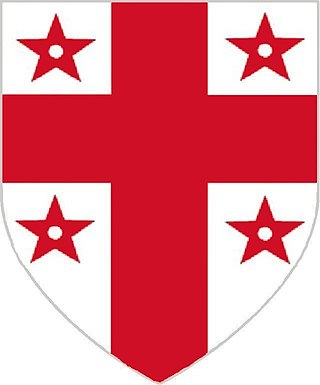
Bodmin is a town and civil parish in Cornwall, England, United Kingdom. It is situated south-west of Bodmin Moor.
Year 1497 (MCDXCVII) was a common year starting on Sunday of the Julian calendar.

The Prayer Book Rebellion or Western Rising was a popular revolt in Cornwall and Devon in 1549. In that year, the first Book of Common Prayer, presenting the theology of the English Reformation, was introduced. The change was widely unpopular, particularly in areas where firm Catholic religious loyalty still existed, such as Lancashire. Along with poor economic conditions, the enforcement of the English language led to an explosion of anger in Cornwall and Devon, initiating an uprising. In response, Edward Seymour, 1st Duke of Somerset sent John Russell to suppress the revolt, with the rebels being defeated and its leaders executed two months after the beginning of hostilities.

Michael Joseph, better known as Michael An Gof, was one of the leaders of the Cornish rebellion of 1497, along with Thomas Flamank.

Thomas Flamank was a lawyer and former MP from Cornwall, who together with Michael An Gof led the Cornish rebellion of 1497, a protest against taxes imposed by Henry VII of England.

St Keverne is a civil parish and village on The Lizard in Cornwall, England, United Kingdom.

The history of Cornwall goes back to the Paleolithic, but in this period Cornwall only had sporadic visits by groups of humans. Continuous occupation started around 10,000 years ago after the end of the last ice age. When recorded history started in the first century BCE, the spoken language was Common Brittonic, and that would develop into Southwestern Brittonic and then the Cornish language. Cornwall was part of the territory of the tribe of the Dumnonii that included modern-day Devon and parts of Somerset. After a period of Roman rule, Cornwall reverted to rule by independent Romano-British leaders and continued to have a close relationship with Brittany and Wales as well as southern Ireland, which neighboured across the Celtic Sea. After the collapse of Dumnonia, the remaining territory of Cornwall came into conflict with neighbouring Wessex.
Charles Gordon Henderson was a Cornish historian and antiquarian.
George Grey, 2nd Earl of Kent, was the son of Edmund Grey, 1st Earl of Kent and Lady Katherine Percy. He was the Second Earl of Kent from 1490 to 1505.
An Gof was a militant Cornish nationalist group suspected of a series of attacks in the 1980s. The name was also used by a group in 2007.

Humphrey Arundell of Helland in Cornwall, was the leader of Cornish forces in the Prayer Book Rebellion early in the reign of King Edward VI. He was executed at Tyburn, London after the rebellion had been defeated.

This timeline summarizes significant events in the History of Cornwall

James Tuchet, 7th Baron Audley was a British nobleman and the only lord to fully join the Cornish rebellion of 1497 opposing the rule of Henry VII of England. He was a leader in the rebel army's march to the edge of London, and in its defeat at the Battle of Deptford Bridge. Captured on the battlefield, he was sentenced for treason and beheaded. His peerage was forfeited, but restored to his son in 1512.
Events from the 1490s in England.
The Second Cornish uprising occurred in September 1497 when the pretender to the throne Perkin Warbeck landed at Whitesand Bay, near Land's End, on 7 September with just 120 men in two ships.

Giles Daubeney, 1st Baron Daubeney, KG PC was an English soldier, diplomat, courtier and politician.

Cornish devolution is the movement to increase the governing powers of the County of Cornwall.
The Yorkshire rebellion took place in England in 1489, during the reign of King Henry VII. Relatively little is known about this rebellion; its main account is found in Polydore Vergil's Anglica Historia.
John Flamank or Flamoke, of Boscarne, near Bodmin, Cornwall, was an English politician.
Gilbert Flamank or Flamoke, of Boscombe near Bodmin, Cornwall, was an English politician.










